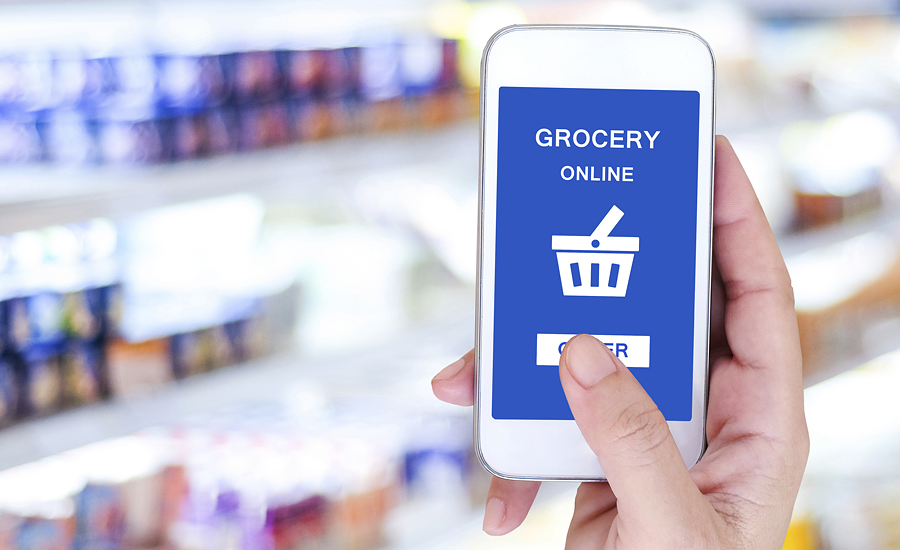Avid online shoppers, who make two or more purchases online in a typical 3-month period, are leading a retail revolution. And, these consumers are shopping more with their smartphones and demanding a more seamless experience between virtual and physical stores, according to the fifth annual UPS Pulse of the Online Shopper study, produced by United Parcel Service Inc. (UPS), Atlanta.
This is the first time in the study’s 5-year history that more than half (51%) of all purchases made by respondents are made online, up from 48% in 2015.
“Consumers are skilled at using technology to their advantage and thrive on gathering information when shopping,” says Teresa Finley, chief marketing officer at UPS. “This year’s UPS study revealed that 45% of online shoppers love the thrill of hunting for and finding great deals, and that physical stores continue to play an important role in that experience. The challenge is how to best engage with shoppers to fulfill their desires.”
Evolved shoppers
The shift from traditional in-store shopping to shopping with multiple channels continues. Seventeen percent of consumers plan to shop less in store, shifting time to their electronic devices.
The use of smartphones is up 10 points (to 77%) over the past two years, and retailers are responding. Online shoppers report a better mobile experience with satisfaction up eight points (to 73%) since last year.
Social media’s influence on purchasing decisions is up nine points (to 34%) in the last year with nearly a quarter of respondents (23%) having made purchases through social media sites.
Shiny new objects
While online marketplaces such as Amazon and eBay are well-established shopping resources, consumers are turning to them earlier to find the best deals. Thirty-five percent of online shoppers now begin their searches at marketplaces.
Reimagining the store
Cross-channel transactions, which refer to purchases using in-store and at least one online channel, now account for 38% of all purchases (up 2 points). Store-only searches and purchases declined by two points (to 20%). Retailers must create seamless experiences that resonate with how their customers want to shop. Providing detailed product information with good photography, professional and peer reviews and online access to store inventory (58% find it important) are critical.
Online sales drive significant in-store traffic. Half of shoppers who buy online end up shipping their purchase to a physical store. Of these, 46% make additional purchases while picking up their items. A majority of shoppers (60%) also prefer to return items to a store, at which time 70% of them make additional purchases. Yet only 36% of shoppers say they experience helpful associates when returning items to a store.
“Cost, control and convenience are shoppers’ primary drivers,” says Finley. “Shoppers may be buying more online, but they still value the physical store. Providing an exceptional in-store experience can position the retailer to convert more sales and enhance loyalty when customers pick up and return items.”
Online shoppers report they are using their smartphones in-store for a full range of actions. Nearly 30% of shoppers look up product reviews (29%), read product details (28%), compare prices (27%) and access coupons for in-store redemption (27%) regularly (often or most of the time). Just 31% of shoppers are aware of in-store beacons. A quarter (26%) of smartphone users are receptive to in-store mobile messaging with urban shoppers (37%) and Millennials (36%) being even more receptive. However, more than four in 10 smartphone users are neutral toward the idea of in-store mobile messaging.
“We know shoppers use their smartphones while in-store, so if retailers can tie together mobile messaging with valuable features in their apps, this can be a winning combination,” says Louis DeJianne, UPS director for retail and consumer products.
The ready retailer
Free shipping continues to be the most important factor driving customer satisfaction when checking out online (73%), although consumers are willing to pay a premium for faster delivery. Half of shoppers (50%) would pay for faster shipping for personal reasons, such as birthdays and holidays.
Home delivery is still the preferred location to receive packages, although more consumers are embracing alternate delivery locations. Preference for alternate delivery locations grew nine points (to 35%) in the last two years. More than half of shoppers are interested in an alternate delivery location with extended hours and lower fees.
“These are exciting and challenging times for retailers,” says Finley. “The industry is changing at an incredibly fast rate. Listening closely to what shoppers want and boldly trying new techniques can give retailers a competitive advantage in this very competitive industry. UPS is working with shoppers and retailers to provide a seamless, engaging experience that everyone will enjoy.”
The UPS Pulse of the Online Shopper study evaluates consumer shopping habits from pre-purchase to post-delivery. The 2016 study is based on a survey of more than 5,000 U.S. online shoppers presented by comScore, Reston, Va.

